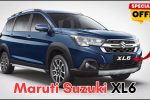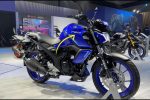
In a world where premium motorcycles today can cost as much as compact cars, a throwback to the prices of yesteryear is always an eye-opener. A recently circulated image of a 1980 Royal Enfield invoice has sparked a wave of nostalgia and amazement among enthusiasts. This one simple piece of paper has taken people back in time, to an era when owning a Royal Enfield was a dream within reach — not a luxury lifestyle statement.
Let’s take a ride down memory lane and explore what made Royal Enfield of the 1980s so iconic — and how much it cost to own one back then.
The Price Tag That Took the Internet by Storm
It all began with a viral post on social media — an original 1980 invoice of a brand new Royal Enfield motorcycle. The total? Somewhere between ₹6,000 and ₹8,000. For a generation used to price tags that start above ₹1.5 lakh, this figure seemed almost unbelievable.
But context matters. In the 1980s, ₹6,000 was still a significant amount. Salaries were modest, and motorcycles, although more affordable than cars, were still a major purchase. Despite that, Royal Enfield was relatively more accessible than it is today in terms of the income-to-cost ratio.
1980 Royal Enfield Models and Prices
Here’s a look at the typical pricing of Royal Enfield motorcycles during the 1980s:
| Model | Approx. Price in 1980 (INR) |
|---|---|
| Royal Enfield Bullet 350 | ₹6,000 – ₹6,500 |
| Royal Enfield Bullet 500 | ₹7,000 – ₹8,000 |
| Royal Enfield Mini Bullet | ₹5,500 – ₹6,000 |
Compare that with today’s pricing:
| Model (2025) | Starting Price (INR) |
|---|---|
| Bullet 350 | ₹1.73 lakh |
| Classic 350 | ₹1.93 lakh |
| Meteor 350 | ₹2.05 lakh |
| Interceptor 650 | ₹3.20 lakh |
| Continental GT 650 | ₹3.45 lakh |
That’s a staggering increase of nearly 25 to 30 times over four decades.
The Brand’s Legacy Through Time
Founded in 1901 in the UK, Royal Enfield holds the record for the world’s oldest motorcycle brand in continuous production. After entering the Indian market in 1955, it quickly became known for its ruggedness and dependability.
By 1980, while the brand had ceased operations in the UK, its Indian operations were thriving. The iconic Bullet had become a favorite of the Indian Army, police forces, and civil administrators for its endurance and commanding road presence.
From Workhorse to Weekend Cruiser
In the 1980s, Royal Enfield motorcycles were considered utilitarian machines — built for tough terrains and long hauls. They were prized for their solid metal build, minimal electronics, and the unmistakable dug-dug thump.
Fast forward to today, and the Royal Enfield experience is as much about lifestyle as it is about performance. Riders now buy into a culture of exploration, group rides, and weekend getaways. Enfields are no longer just transport — they’re a statement.
The Tech Transformation
Technology has played a huge role in this brand’s evolution. Compare the specs of the 1980s model with today’s features:
| Feature | 1980s Enfield | 2025 Enfield |
|---|---|---|
| Fuel System | Carburetor | Electronic Fuel Injection |
| Brakes | Drum | Disc with ABS |
| Emissions Norms | None | BS6 Compliant |
| Suspension | Basic Hydraulic | Advanced Telescopic & Gas-Charged |
| Start Mechanism | Kick Start | Electric & Kick Start |
While the older models had their charm, they lacked the refinement, efficiency, and safety that modern motorcycles offer today.
Vintage Bikes and Their Modern Worth
Today, a well-maintained Royal Enfield from the 1980s is a collector’s dream. These machines often fetch more than their modern counterparts in the vintage bike market. Enthusiasts and restorers prize them for their authenticity and the nostalgia they invoke.
Some collectors have reportedly paid upwards of ₹3 lakh for original-condition vintage Enfields — a sharp contrast to their original showroom price of under ₹8,000.
Nostalgia in Modern Marketing
Royal Enfield has brilliantly used its rich legacy in its branding. The company retains the retro styling in models like the Classic 350 and continues to celebrate the brand’s history in its global marketing.
Campaigns are often themed around old roads, timeless journeys, and tales of thumping engines echoing in the Himalayas. This use of nostalgia keeps older fans engaged while attracting a new generation of riders.
Bridging the Past and the Present
Royal Enfield’s growth story is not just about rising prices — it’s about reinvention. From a functional machine of the 1980s to today’s lifestyle product, the brand has managed to honor its roots while embracing the future.
The viral 1980 invoice did more than surprise — it reminded us that motorcycles aren’t just machines. They’re memories. Their journeys. And sometimes, they’re even time machines.
Frequently Asked Questions
Q1: How much was a Royal Enfield in 1980?
A: Prices ranged from ₹6,000 to ₹8,000 depending on the model variant.
Q2: What does a Royal Enfield cost in 2025?
A: Current prices start from ₹1.7 lakh and go up to ₹3.5 lakh+



